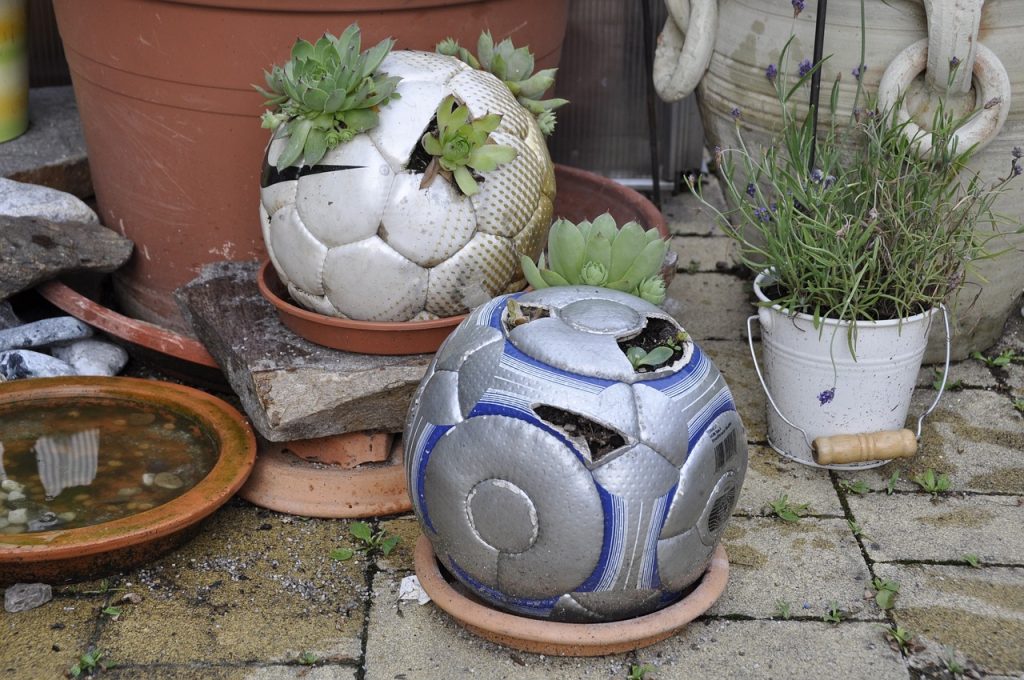Table of Contents
In an era marked by environmental concerns and a growing emphasis on sustainability, the trend of upcycling and repurposing has gained significant momentum. This movement, which involves transforming old or discarded materials into new, valuable items, reflects a broader shift towards more sustainable and conscious consumption. From fashion and home décor to art and technology, upcycling and repurposing are redefining how we view waste and creativity. This article explores the rise of this trend, its impact, and the ways in which it is shaping our world.

Understanding Upcycling and Repurposing
Upcycling refers to the process of converting waste materials or useless products into new materials or products of higher quality or value. It is a creative approach that extends the lifecycle of items, turning potential waste into desirable goods.
Repurposing, on the other hand, involves adapting an item for a use other than what it was originally designed for. This could mean using old furniture in new ways or reimagining packaging materials as home décor.
Both practices share a common goal: reducing waste and minimizing environmental impact by making the most out of existing materials.
Factors Driving the Trend
- Environmental Awareness: As climate change and environmental degradation become increasingly pressing issues, consumers and businesses are seeking ways to reduce their ecological footprint. Upcycling and repurposing provide practical solutions to the problem of waste by reusing materials and reducing the need for new resources.
- Sustainable Consumption: The growing movement towards sustainable living has influenced many to rethink their consumption habits. Upcycling and repurposing align with this shift, offering eco-friendly alternatives to traditional production and disposal methods.
- Economic Benefits: Upcycling can be a cost-effective way to create new products from old materials. It often requires less financial investment compared to purchasing new items, making it an appealing option for individuals and businesses looking to save money.
- Creative Expression: Upcycling and repurposing offer a platform for creativity and innovation. Artists, designers, and DIY enthusiasts embrace these practices as a way to express their unique styles and ideas, turning ordinary items into extraordinary creations.
- Consumer Demand: There is a growing demand for unique, personalized, and handcrafted items. Upcycled and repurposed products often stand out due to their originality and the story behind their creation, attracting consumers who value individuality and sustainability.
Impact on Various Sectors
- Fashion Industry: The fashion industry has been a significant driver of the upcycling trend. Designers and brands are increasingly using recycled fabrics and materials to create new clothing lines. This not only reduces waste but also challenges conventional fashion norms, leading to innovative and trendsetting designs.
- Home Décor: Upcycling and repurposing have become popular in home décor, where old furniture, jars, and other materials are transformed into stylish and functional items. This trend allows individuals to personalize their living spaces while minimizing waste.
- Art and Craft: Artists and crafters are using upcycled materials to create unique artworks and crafts. From sculptures made of scrap metal to jewelry crafted from discarded items, this sector showcases the artistic potential of repurposing.
- Technology and Manufacturing: In the tech world, upcycling is being explored through the refurbishment and repurposing of electronic devices. Companies are finding ways to extend the life of gadgets and reduce electronic waste by upgrading and recycling components.
- Food Industry: The food industry is also embracing upcycling through initiatives that reduce food waste. Examples include creating new products from surplus or imperfect produce, and repurposing food by-products into nutritious ingredients.

Strategies for Successful Upcycling and Repurposing
- Identify Valuable Materials: The first step in upcycling is to identify materials that have potential value. This could be anything from old clothing to discarded furniture. Assess the condition and potential of these items before starting the transformation process.
- Get Creative: Creativity is key to successful upcycling and repurposing. Experiment with different ideas and techniques to give new life to old materials. Utilize online resources, tutorials, and inspiration from others to guide your projects.
- Focus on Quality: Ensure that the upcycled or repurposed item meets high standards of quality. This not only enhances its value but also ensures that it can be used or enjoyed for a longer period.
- Incorporate Sustainability: Emphasize sustainable practices in your upcycling projects. Use eco-friendly adhesives, paints, and finishes, and consider the entire lifecycle of the item, including its eventual disposal.
- Engage with the Community: Collaborate with others who are passionate about upcycling and repurposing. Join local groups, attend workshops, and participate in community events to share ideas and gain support.
- Promote Your Work: If you are creating upcycled or repurposed products for sale, focus on marketing their unique features and environmental benefits. Highlighting the story behind the items can attract customers who value sustainability and creativity.
Challenges and Considerations
- Quality and Durability: Ensuring the quality and durability of upcycled products can be challenging. It is important to address any potential issues with the materials used and to perform thorough quality checks.
- Market Perception: Some consumers may view upcycled or repurposed items as less desirable or lower quality compared to new products. Educating the market about the benefits and value of these items is essential to overcoming this perception.
- Regulatory Compliance: In certain industries, such as food and technology, upcycling and repurposing must comply with regulations and standards. Ensuring that products meet safety and quality requirements is crucial for success.
- Time and Effort: Upcycling and repurposing often require significant time and effort. From sourcing materials to executing the transformation, these processes can be labor-intensive and may not always be cost-effective.
Future Outlook
- Increased Innovation: As technology and materials science advance, upcycling and repurposing will continue to evolve. Innovations in recycling techniques and sustainable materials will drive new possibilities and applications.
- Broader Adoption: The trend towards upcycling and repurposing is likely to expand across various industries and geographic regions. Increased awareness and education will encourage more individuals and businesses to embrace these practices.
- Integration with Circular Economy: Upcycling and repurposing will play a key role in the circular economy, where the focus is on reducing waste, reusing resources, and creating a closed-loop system. This integration will support more sustainable and resilient economic models.
- Community and Collaborative Efforts: The rise of community-based and collaborative upcycling initiatives will foster greater engagement and creativity. Local projects, workshops, and maker spaces will continue to support and amplify the upcycling movement.

Conclusion
The rise of upcycling and repurposing represents a positive shift towards more sustainable and creative approaches to consumption and waste management. By transforming discarded materials into valuable new products, individuals and businesses are making significant contributions to environmental conservation and innovative design. As the trend continues to grow, it will drive further advancements in sustainability and inspire new ways of thinking about resources and creativity. Embracing upcycling and repurposing not only benefits the environment but also enriches our lives with unique, personalized, and meaningful creations.